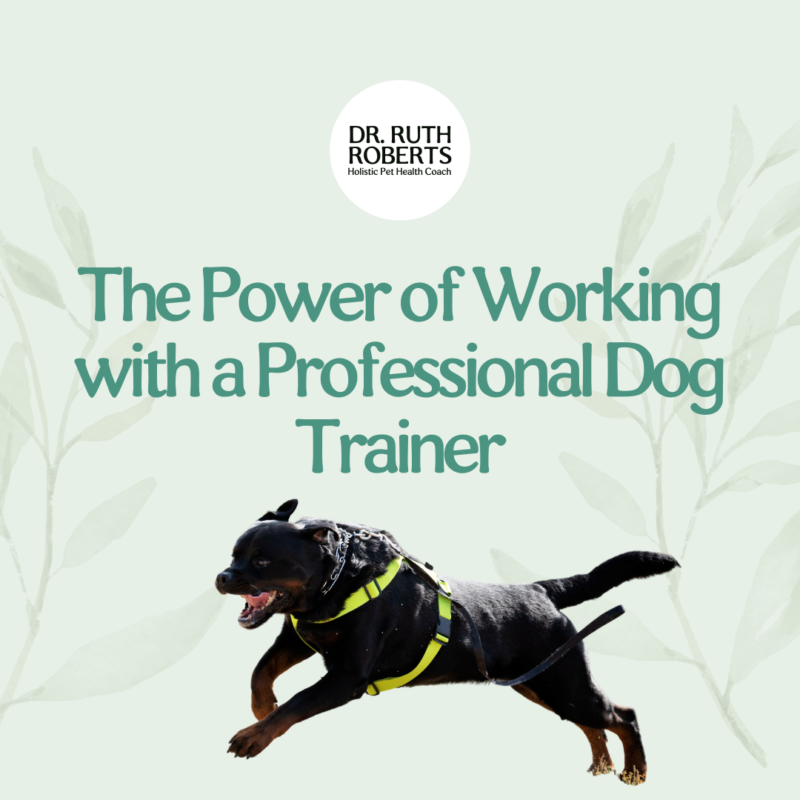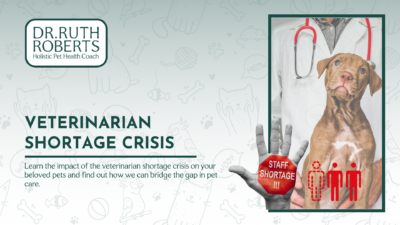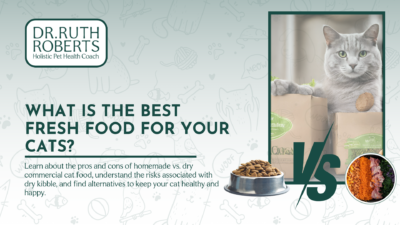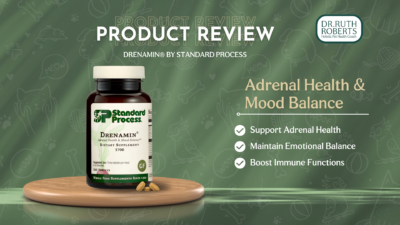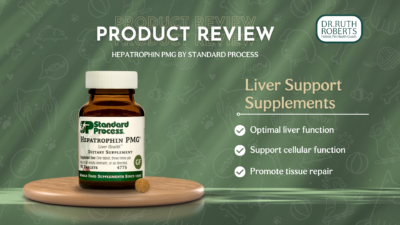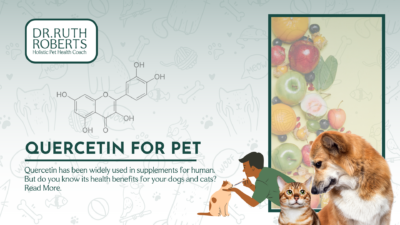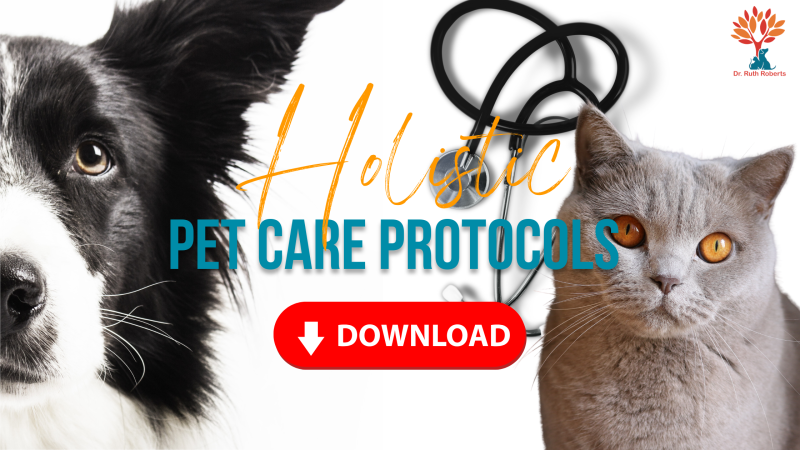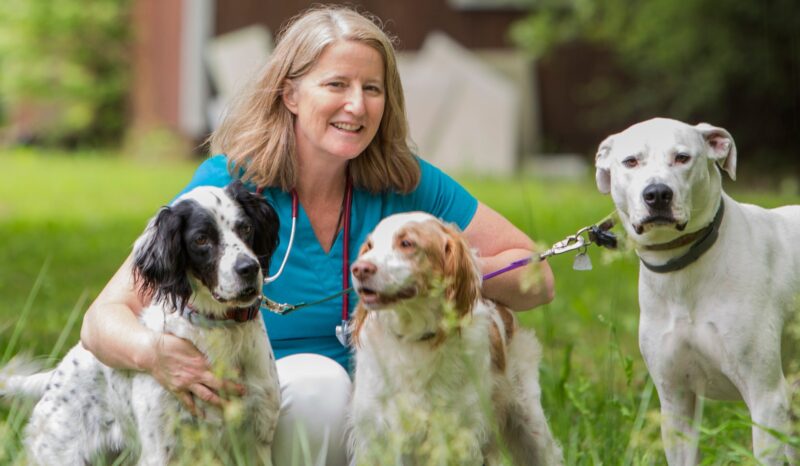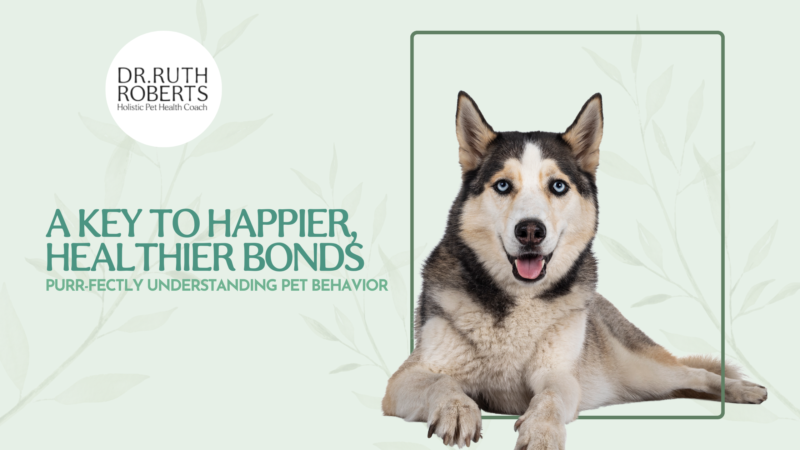
Understanding Pet Wellness
I am the Original Holistic Pet Health Coach, and am now training passionate pet parents, and pet professionals to be Certified Holistic Pet Health Coaches so that more pets can be helped holistically.
Behavior issues in pets are the number one reason most of them are turned into a shelter, and the lack of housebreaking, aggression, destructiveness, and overactivity are the top reasons why their parents give up on them. It is important to understand our pet’s behavior and help them feel comfortable and relaxed.
(Salman MD, Hutchinson J, Ruch-Gallie R, et al. Behavioral reasons for relinquishment of dogs and cats to 12 shelters. J Appl Anim Welfare Sci 2000;3:93–106).
Your veterinarian sees your new puppy or young dog often before a trainer sees your new pet and many pets adopted from pet shelters will develop a health issue within 1 month of adoption, but your veterinarian may not ask you about how your new pet is fitting in at home, only the medical issue.
Many vets are able to see the body language in new puppies and young dogs that concern us, but we may not be able to tell you how to modify that behavior. We may be worried about your new dog growing up to be more fearful in our office, and becoming aggressive out of fear.
Many vets are stuck on the idea of alpha dog versus leader dog and many vets have not shifted to the new idea of what “wellness” is.
Not just vaccines and heartworm prevention, but optimizing your dog’s physical, emotional and behavioral health, using all the tools we have available to us.
What does your dog need to have normal healthy behavior?
- A safe, comfortable place to rest and sleep.
- The freedom from or the ability to escape from unnecessary pain, fear, threats, and discomfort.
- The ability to control some aspects of the environment.
- the ability to express normal behaviors such as chewing, scratching, and elimination in a manner that is appropriate.
- Adequate exercise and play, and mental stimulation.
- The ability to have pleasant social contact with other dogs and humans to which the animals have been socialized.
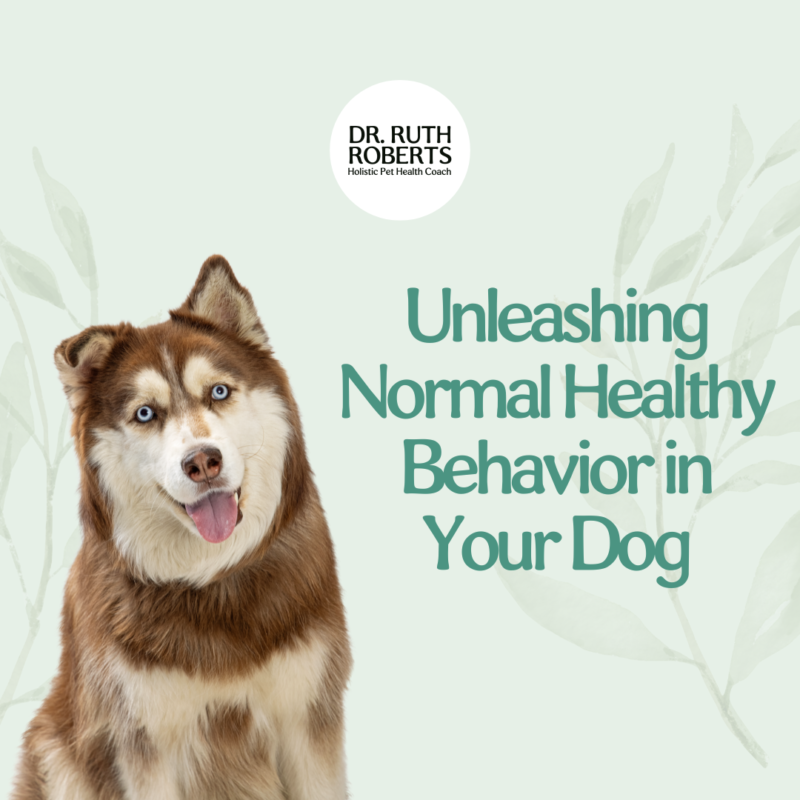
What is considered to be normal healthy behavior?
- Dogs are affectionate, without being needy.
- They are friendly toward or at least tolerant of people, including children, and other members of their own species.
- They enjoy or at least tolerate normal, everyday handling, and interactions.
- Dogs eliminate only in acceptable areas.
- They are not overly fearful of normal, everyday events, or new events.
- Healthy dogs adapt to change with minimal problems.
- They play well with others by not becoming uncontrollable or rough.
- They are not a nuisance or danger to the community.
- Healthy dogs can be left alone for reasonable time periods without becoming anxious or panicked.
- They readily relinquish control of space, food, toys, and other objects.
- Healthy dogs vocalize or talk when appropriate, but not to excess.
- Healthy dogs reliably respond when told to sit, down, come, or stay.
What are situations that can lead to worsening pet's behavior issues, and being turned over to a shelter?
- Family lifestyle changes, such as a move or a new baby, that may put pets at risk for problems.
- The pet’s daily routine, lifestyle, and whether its behavioral needs are being met.
- Changes in the pet’s routines, such as spending more time outdoors or alone
- The pet’s behavior at home like excess barking, rushing the front door, house soiling, and fearfulness that may be early warning signs of a problem that may develop.
- The pet’s behavior at the veterinary hospital and discussion of any behaviors of concern, such as fear, threats, or aggression.
- Adequate exercise and play.

Pet owners often tell me their dog is being spiteful or exacting revenge when it goes to the bathroom in the house or destroys something when they leave, but in reality, the dog is often displaying early signs of separation anxiety, and don’t feel safe left home alone. Visit my anxiety support protocol if your dog shows signs of anxiety.
Many pet owners think it is cute when their new puppy barks at them to get them to feed faster, go outside, etc.
This behavior is no longer cute when the dog is doing the same thing at 2 years of age, and the pet owner can’t figure out how to make it stop.
I often tell pet owners, especially first-time dog owners that if their puppy is doing something they don’t want them to do as a grown dog, now is the time to change that behavior. Dogs are like kids, if they don’t know what the rules are, or the rules are selectively enforced, then they become confused, and make up their own rules, to which we often conform.
From there, the situation can spiral out of control to the point where the dog owner is in tears in my office, worried they will have to take their dog to the local shelter.
- Create a safe, calm, quiet place for your dog – crate, bathroom, etc. clocks, blankets, Chew toys Adaptil diffuser, collar, spray
- Limit the space accessible
- Isolate from other pets initially, introduce at a neutral place.
- Introduce to other family members in a calm way.
- Recognizing behaviors that indicate fear or emotional discomfort, recognizing fearfulness, worry, apprehension – lip-licking head turns, the body turns, pulling back.
- Adequate exercise and play
- Consistent exercise times and play time.
- puppy pads
- crate training
- umbilical method persistence, schedule
- common issues – UTI, Diarrhea
- food – whole cooked foods, canned or raw foods, dry nutrition – avoid things you can’t pronounce, moderate protein, carbs, fat, not high carb diets full of preservatives and artificial flavors or colors.
- Supplements are also very important aspect on their diet.
Grooming, nails, ears, feet, and vet visits.
- Vaccines – Know when to get a vaccine and what type of vaccine you should get.
- Spaying and neutering – There are several ways to care for your pets after surgery. Learn which supplements you can give them ton help their wound heal faster.
